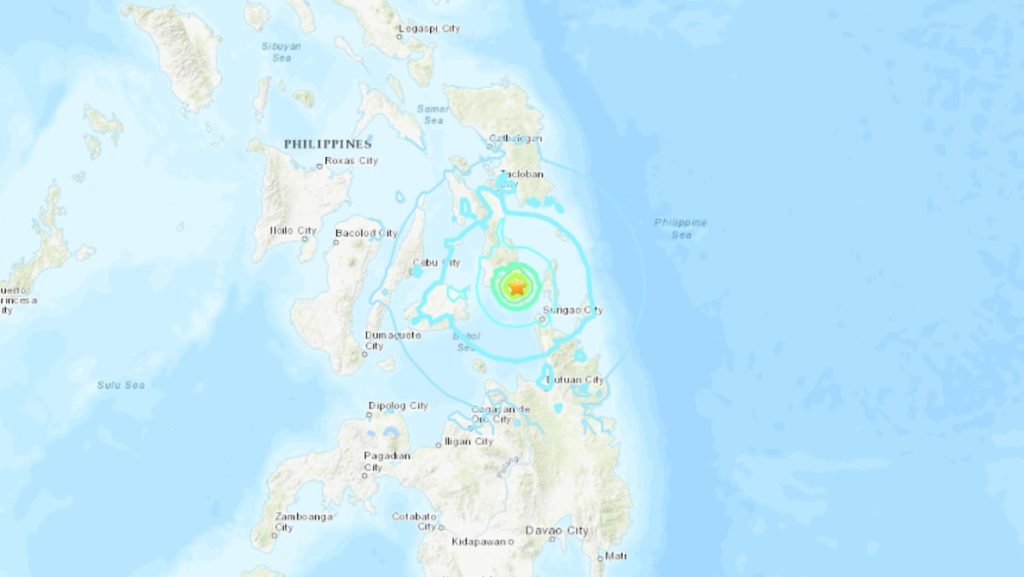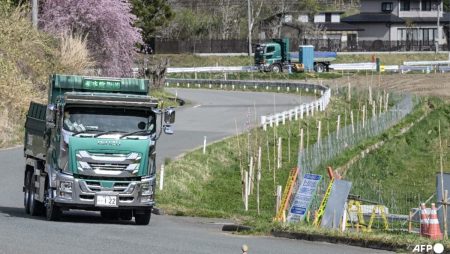The Philippine archipelago, situated precariously along the volatile Ring of Fire, experienced a seismic jolt on Thursday, January 23rd, as a magnitude 5.9 earthquake struck off the coast of Leyte province. The tremor, originating at a shallow depth of 10 kilometers, was centered near the town of San Francisco, a municipality nestled on the western edge of the island. The Philippine Institute of Volcanology and Seismology (PHIVOLCS), the nation’s primary authority on geological activity, swiftly issued a bulletin detailing the earthquake’s parameters and cautioned about the potential for damage and subsequent aftershocks, a common occurrence in the aftermath of such seismic events.
Initial reports from San Francisco, relayed by Police Major Barnie Catig, the town’s police chief, described the quake as brief but intense. While the short duration likely mitigated the extent of the impact, the strength of the tremor was palpable, causing picture frames to dislodge from shelves in some residences. Major Catig confirmed that despite the noticeable shaking, no immediate reports of significant structural damage or casualties had emerged. This initial assessment, however, represents a preliminary overview, and a more comprehensive evaluation of the impact is likely to unfold in the hours and days following the event, as authorities and residents have the opportunity to conduct more thorough inspections.
The Philippines’ precarious location along the Ring of Fire, a horseshoe-shaped zone encircling the Pacific Ocean, renders it particularly susceptible to earthquakes and volcanic eruptions. This geological vulnerability stems from the dynamic interplay of tectonic plates in the region. The Ring of Fire is essentially a subduction zone, where denser oceanic plates collide with and slide beneath lighter continental plates, generating immense pressure and friction. This constant tectonic activity is the driving force behind the frequent earthquakes and volcanic eruptions that characterize the region.
The Philippine archipelago itself is a complex mosaic of microplates caught within this larger tectonic framework, further complicating the seismic landscape. The movement and interaction of these smaller plates contribute to the high frequency of earthquakes across the country, ranging from barely perceptible tremors to devastating major events. The shallow depth of the January 23rd earthquake, a mere 10 kilometers below the seabed, amplified its potential impact on the nearby coastal communities. Shallow earthquakes, while often less powerful in terms of absolute magnitude, tend to concentrate their energy near the surface, leading to more pronounced ground shaking and a higher risk of damage compared to deeper earthquakes of similar magnitude.
The ongoing assessment of the earthquake’s impact will involve a detailed survey of the affected areas, focusing on identifying any structural damage to buildings, infrastructure, and homes. Authorities will also prioritize evaluating the potential for landslides and other secondary hazards, which can pose significant risks in hilly or mountainous terrain, particularly following intense ground shaking. The proximity of the earthquake’s epicenter to the coastline necessitates a careful examination of the potential for tsunami generation, although the relatively moderate magnitude of this event suggests a low probability of a significant tsunami.
While the initial reports from San Francisco offer a sense of cautious optimism, the true extent of the earthquake’s impact will only be fully understood through a comprehensive assessment of the affected areas. The Philippines, with its long history of seismic activity, has developed robust disaster preparedness and response mechanisms. These systems, refined through experience with past earthquakes, play a crucial role in mitigating the human and economic consequences of such events. The response to the January 23rd earthquake will likely involve a coordinated effort between local authorities, national agencies, and international organizations, focusing on providing immediate relief to affected communities, assessing the damage, and initiating the long process of recovery and reconstruction. The event serves as a stark reminder of the Philippines’ inherent vulnerability to natural hazards and underscores the critical importance of continued investment in preparedness and resilience-building measures.









